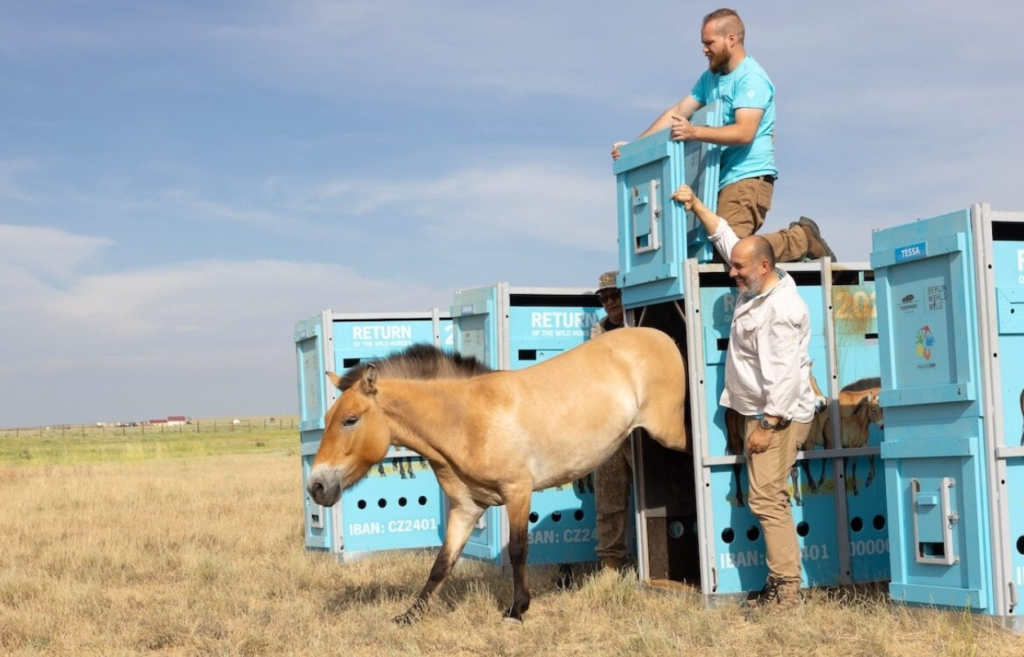
The endangered Przewalski’s horse (Equus ferus przewalskii) is the last wild horse species on Earth, meaning a type of wild horse that is not a descendent of domesticated horses. But in the 1960s, this horse became extinct in the wild. Now, through a managed breeding and care program by the Prague Zoo, Przewalski’s horse has been returned to Kazakhstan’s Golden Steppe for the first time in at least two centuries.
In early June 2024, two Czech Army CASA aircrafts carried a total of seven Przewalski’s horses to Golden Steppe, an area of open grasslands. The first aircraft with three horses landed on June 4, according to a press release from the Prague Zoo.
On June 6, the remaining four horses were transferred to the grasslands. But the project did not go as smoothly as hoped, as eight horses in total were originally planned for the trip. But in the first batch of horses, one horse named Pelle kept sitting in his crate, which the zoo noted could be dangerous for him during the long journey. Some technical difficulties also led to delays, but overall, the horses were transported safely, marking a successful project.
“This is an event of historical import: the seven ‘Przewalski’s’ that we transported here by two CASA planes represent the first individuals of this species in central Kazakhstan in hundreds of years,” Bobek said in an update. “With this double transport, we have taken a major step towards returning the last wild horse to another area where it was found in the past. Our goal is to slowly transport at least forty individuals here, so that a viable population can be set up. Hardly anything could be a better demonstration of the purpose of modern zoos than the Return of the Wild Horses.”
The horses will roam in an area spanning 80 hectares and will be closely monitored by researchers, EuroNews reported.
Przewalski’s horses were once abundant across Europe and Asia, but environmental changes and competition with livestock and humans led their habitat to shrink, the Smithsonian’s National Zoo & Conservation Biology Institute reported. Eventually, they became extinct in the wild. But reintroduction projects, like those led by Prague Zoo, have helped return the species to the wild at sites in Kazakhstan, Mongolia and China.
The San Diego Zoo and the San Diego Zoo Safari Park has also led a major breeding program for the species, with more than 157 Przewalski’s horses bred since 1969. According to the zoo, it sends the offspring to reintroduction programs and other zoos to help with species recovery.
As EuroNews reported, Prague Zoo is slated to transfer additional horses to Golden Steppe in 2025. In addition to the 40 total horses Prague Zoo plans to eventually reintroduce to Golden Steppe, the zoo is expected to send more Przewalski’s horses to Mongolia in two years.
“We are still responsible the fact this wild horse disappeared and now we can sort of reverse that, and give it back to nature,” Filip Mašek, spokesperson for Prague Zoo, told the BBC. “To sort of be these Noah’s Arks which have all these endangered species. If it’s possible — and sometimes it’s not — we should try and do everything to return them to their original environments.”
